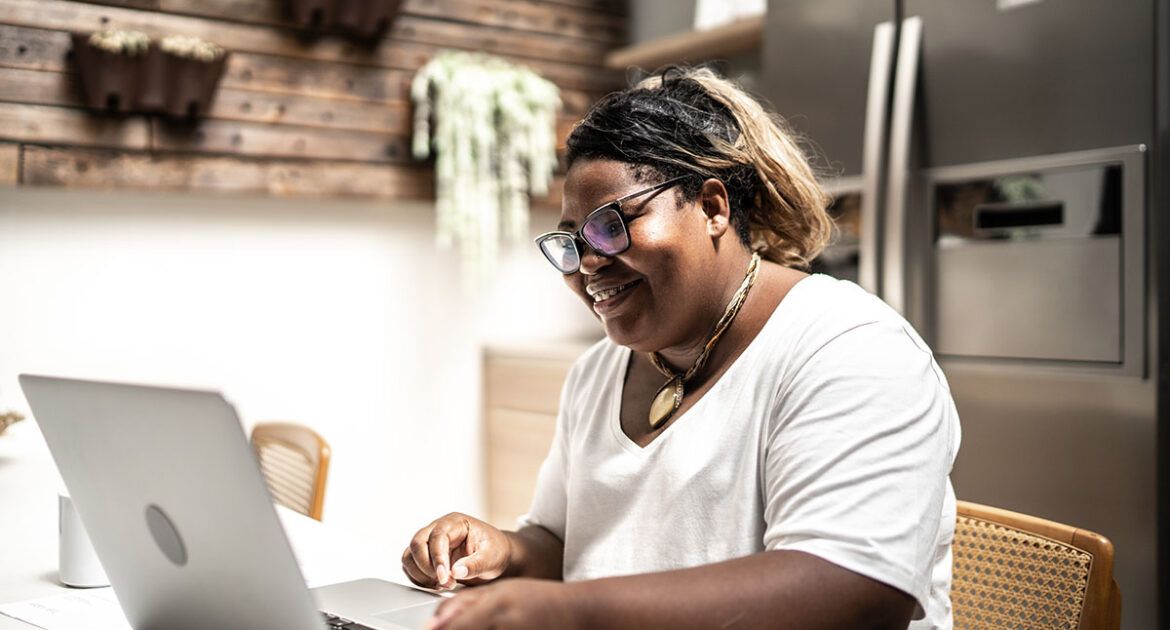There are pros and cons to working from home and at times, it can feel like an emotional rollercoaster.
- Over the past decade, working from home has been on the increase. The Covid-19 pandemic saw a surge in the number of people working from home. According to the Office of National Statistics (ONS), in April 2020, nearly half (46.6%) of people in employment did some of their work from home, with the vast majority (86.0%) of these homeworkers stating that this was because of the coronavirus (COVID-19) pandemic.
- The latest survey from Ipsos-MORI found that younger workers need more time in person with colleagues than older workers. Around six in ten Gen Z (58%) and half (49%) of Millennials say they need to spend face-to-face time with colleagues in order to able to work effectively.
- The same Ipsos-MORI survey reported that more than half (54%) of Millennials believe their overall mental health has worsened during the pandemic, and just under half (49%) of Gen Z and 55 per cent of Millennials feel under increased pressure to perform at their best when working from home.
We know that there are upsides for most of us who work from home. There is less commuting time and as research shows, commuting was one of the biggest stressors for employees. For some of us, working from home has also enabled more flexibility – such as going to medical appointments, or home-schooling children.
But there are also plenty of downsides including:
- A lack of boundaries with no physical separation between work and home.
- Some people don’t have sufficient space at home, maybe working in a bedroom if in shared rented accommodation.
- Feelings of isolation and loneliness, particularly for those who may live alone and/or have needed to isolate for medical reasons.
- It can be difficult to build relationships online and people who’ve got a new job during the pandemic may struggle to make connections with colleagues.
- Being online all the time is tiring, with a recent Stanford University study reporting the four main effects of Zoom fatigue on our self-esteem and brainpower.
If working from home is going to be your ‘new normal’ then here are some tips to help:
Have physical and technological boundaries
A 2020 study led by YoungAh Park, at the University of Illinois, found that employees who had boundaries in place between their work technology and personal lives were better able to handle stress. One of the most effective tactics was to switch off email alerts on smartphones in non-work time.
A tactic many of my clients have found helpful is to put all work-related items away. This means closing down your laptop and putting it in a drawer or cupboard and clearing away notebooks and pens. When these items are always in view it makes it difficult for our brains to switch off because it tells us we still need to be in work mode. And if you have a PC, with a monitor and keyboard, do what one of my clients does and cover it with a tablecloth.
Another tactic some of my clients and students have been using is to put in place ‘commuter time’, such as reading a fiction book for 30 minutes before starting work, and then again at the end of the working day. Or, alternatively, going for a 10-minute walk around the block before and after work. Both activities signal to your brain it’s time to switch on and then switch off.
Embrace your hobbies
What we’re going through and how many of us are feeling isn’t new. During the Second World War, the psychiatrist William C Menninger was asked by the US Government to investigate the impact of hobbies on national morale. In his study, Menninger said,
“most individuals will have at least some leisure time when the need for relaxation, escape and re-creation will be even greater than under normal conditions. If this time is utilized by the individual for [their] own maximum benefit in a constructive and intelligent manner, [their] daily work may be much more efficient and [their] own morale supported and sustained.”
In other words, having a hobby could be a powerful way to offset the negative impact of always being at home. This was a finding in a 2020 study led by Daniel B Cohen who found that people who pursued meaningful activities felt more satisfied compared to those who simply kept themselves busy. Activities such as binge-watching TV shows left people feeling unhappy just as much as they felt happy, while meaningful activities such as baking for flat-mates or family, calmed people down.
Move your body
A 2015 study from Stanford University suggested that a 90-minute walk in nature can have a positive effect on our mental and physical health and wellbeing. However, the same study suggests that we can achieve similar effects with even just a 10-minute walk.
For those of us not lucky enough to live in the countryside, you might be relieved to hear that a 2020 study from the University of Tsukuba, in Japan, found that walking in urban greenspaces, such as local parks, helped people better cope with work-related stress. There’s a reason the Victorians said “parks are the lungs of the city”.
And if, for some reason, you’re unable to go outside for a walk, there are still things you can do to move your body. For example, the NHS has a one-page guide for three-minute seated yoga, with simple stretches we can do when hunched over a laptop.
Connect over a cuppa
In a Harvard Business Review article on loneliness and isolation at work, Vivek H Murthy says,
“Our understanding of biology, psychology, and the workplace calls for companies to make fostering social connections a strategic priority. A more connected workforce is more likely to enjoy greater fulfilment, productivity, and engagement while being more protected against illness, disability and burnout.”
As humans, we have a deep-seated need to connect with others in some shape or form. The psychologist Roy Baumeister refers to this as belongingness. Which is why we can learn much from our friends in Scandinavia. For example, in Sweden there is the concept of fika, which is often translated as a cake and coffee break. But really, it’s about making time for connecting with friends and colleagues. At many workplaces across Sweden, fika is a big part of the regular daily schedule, even during the pandemic. Most workplaces have a fika mid-morning and again, mid-afternoon. These mini-breaks are anything between 10 minutes and 30 minutes and are referred to as fikarast or fikapaus.
Microbreaks – the power of little and often
This has been the most powerful lesson for many of my clients during the pandemic. Often, we add to our pressure and stress by feeling the need to schedule in an hour for lunch, an hour for exercise, a couple of hours with a partner etc. The result? When we feel overwhelmed it can mean we end up doing none of these things and a vicious circle ensues.
Allowing ourselves even just a few minutes of downtime can be enough to boost our mental and physical relaxation. Psychologists at the University of Konstanz, in Germany found higher levels of psychological and physiological relaxation in people after only ten minutes of receiving a massage. It doesn’t even need to be a professional massage, the same effects can be achieved by someone gently stroking your shoulders, or even just resting your head on the table and closing your eyes for ten minutes.
A 2021 study in the Journal of Applied Psychology found that microbreaks can help tired employees bounce back and engage better with their work later in the day, particularly when we have the autonomy over when we take microbreaks. Examples of microbreaks include activities such as having a snack, chatting with a colleague, stretching, listening to a podcast, or doing a crossword puzzle. The effects of microbreaks were even more powerful when people felt their employer genuinely cared about their well-being (note to any managers reading this).
And for employers…
For any managers or HR people reading this article, there are some great resources to help you help your employees, including:
- A checklist for setting up working from home by ACAS
- Tips for working from home by the British Psychological Society





A Sthint C or training group is a form of group training where participants learn about themselves (and about small group processes in general).
Thanks for this information, beign a housewife, however i have been testing this system, to get some income, as i can only work from home. At present i had made some money.not huge amount, but as a start with good decent income.you can also have a look at it here to check if it wkork for you as well.
I’m so glad you wrote this article! I’ve been working from home for a few years now and it’s definitely not as easy as it sounds. It can be really tough to stay motivated and focused when you’re at home all day, especially if you don’t have a dedicated workspace. I’ve found that setting some ground rules for myself, like getting dressed for work and taking regular breaks, has helped me to stay on track. And of course, being able to work in my pajamas is a huge perk!